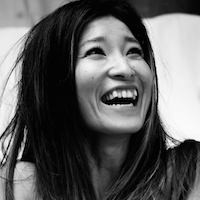Sequencing a vinyasa class is a complicated matter.
Every tradition, every school has taught this in their own way. Thousands of creative moves are all over Instagram and Youtube. But how does a creatively sequenced yoga class differ from a great dance class?
I used to look everywhere, from Youtube to online classes to books to my friends’ classes. Self study (svadhyaya) is an integral part of being a yoga student. But when hours of research start to become a source of anxiety, confusion and fear, it is no longer a form of self-study but rather a mixture of self torture and self doubt stirred in a crazy eight that serves benefit to no one, including us as yoga teachers.
So here are a few points in no particular order from my personal mistakes and what I learned from my teachers:
- It is not choreography. I used to sequence each pose only because it was convenient. It seemed to flow right. I was letting my heart take over. And by all means, if you are having your own personal practice, dance your heart out and let your prana soar. But when you are teaching a class, you are responsible for leading your students. All things must be considered because of the fact that yoga practice affects our nervous, circulatory, respiratory, digestive and endocrine systems. It’s not just a matter of what looks beautiful.
- Make sure what you learned is digested. When you learn something new, it doesn’t mean you should teach it that evening. If you can’t cue it smoothly, it could be potentially dangerous. If the cueing doesn’t come out naturally for you, it has not been digested yet. Sit with it and practice, which brings me to the next point.
- Is it worth it? Even if you sit with it, practice it over and over, some sequences are just not worth teaching especially when it is overly complicated and does not leave students with a sense of grounding and confidence. As the song says, you gotta know when to fold’em and know when to walk away.
- No brainer: keep it safe and know the modifications. Even if your cool sequences kick a**, make sure it is actually safe for all students. Some students can certainly do the sequence no problem, but at cost. Perhaps they’re over-straining their neck, or hyperextending their elbows. Maybe their shoulders are in danger because their muscles are too fatigued. If you really want to teach the special sequence, know all modifications for each pose.
- Do not believe in a simple counter pose idea. Good teacher trainers will teach you what it actually means by counter poses. It doesn’t mean you should go from urdhva dhanurasana straight to pascimottanasana. Extreme opposites do not go together. When in doubt, always bring the spine back to neutral or add a gentle twist in between opposite poses. It’s kinder for the body.
- Anatomy is a living organism. No matter how much you study, you should always update your knowledge of anatomy and with it, your cueing too. Anatomy is science. Actually, yoga is science and it keeps evolving. Maybe what you learned about sequencing certain poses no longer applies to your classes. Keep your wisdom up to date.
There are more. At the end of the day, as my teacher said, the only thing we have to offer is our own experiences. Nothing beats more than your regular personal practice. Humbly offer what you learned and you can be sure you’d be of great benefit to your students.
Relephant Read:
5 Great Songs to Boost Your Vinyasa Yoga Flow.
Author: Tomomi Kojima
Editor: Catherine Monkman
Photo: Instagram


 Share on bsky
Share on bsky




Read 1 comment and reply